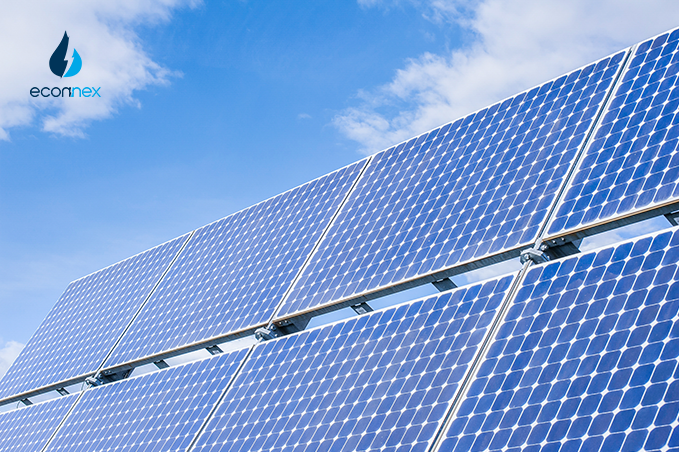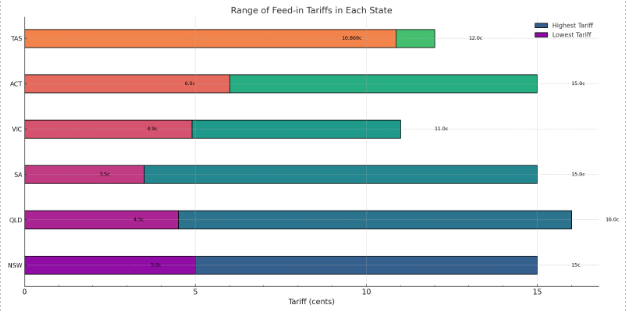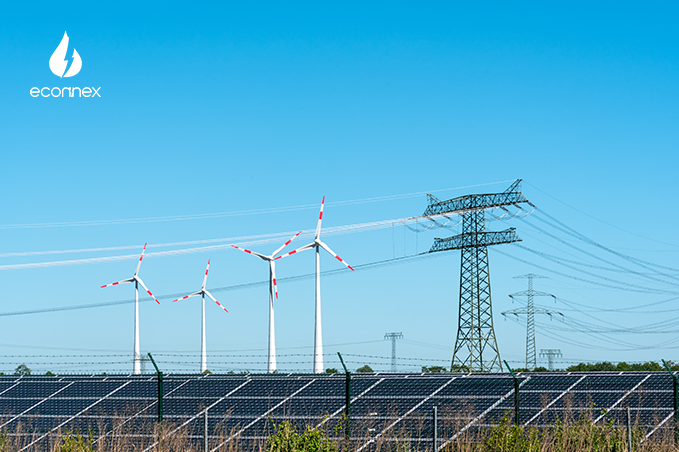Solar power pays off! Explore the notion of the best feed-in tariffs in major Australian states to make your green energy journey more rewarding.

Published on 05/11/2023
By William Walton
Energy Comparison
If you want to maximise the return from your solar system, you need to compare energy plan options to take advantage of the Australian Solar Feed-in Tariff (FiT) program. However, it can appear complex to sort through the details at first, as different states and territories have varying laws relating to this program, such as those mandating a minimum FiT rate from retailers.
It’s time to take a broad view, sorting through the intricacies of each major Australian state regarding Feed-in Tariffs and the peculiarities of their energy markets. By the time we’re done, you’ll have more clarity – enabling you to make well-informed decisions concerning your chosen solar array and energy plan when comparing via Econnex.
Let’s dive in.
In layperson’s terms, your feed-in tariff determines the price you are paid per kilowatt hour (kWh) by your energy retailer when you export excess solar power.
To explain further, you’ll receive an import-export smart meter for your new solar power system purchased through our solar comparison platform. The meter records the amount of electricity your household consumes in addition to the net energy generated by your solar array/s.
If you consume less energy than you generate through solar, you can export that excess electricity back to the grid, which promotes stability and resilience. Thanks to the Australian FiT program, you’ll be paid for this exported energy, helping you to offset energy bills and reduce your carbon footprint at the same time.
Currently, no federal legislation stipulates the rate at which energy retailers must pay for solar energy exported back to the grid nationwide.
“So, how much will I be paid?” I hear you ask (very reasonably).
That’s where the states enter the equation. The energy market in each Australian state or territory has a unique mix of providers, regulations, and consumers. Some, such as WA, have highly regulated markets with only one or two available energy providers. Others, such as Victoria, have legally mandated minimum Feed-in Tariff requirements that dictate what their retailers can offer consumers with solar.
Energy Market - Competitive, with numerous providers.
Solar FiT - No mandated minimum FiT. Retailers offer various rates.
Energy Market - Highly competitive with many providers.
Solar FiT - A minimum FiT is set by the Essential Services Commission. At the time of writing, the minimum flat rate is 4.9c/kWh.
Energy Market - Competitive, especially in Southeast Queensland.
Solar FiT - No state-wide mandated minimum FiT. Some regions have voluntary FiT schemes.
Energy Market - Competitive with a variety of providers.
Solar FiT - No mandated minimum FiT. Retailers offer different rates.
Energy Market - Less competitive, with a dominant state-owned provider.
Solar FiT - No mandated minimum FiT. FiT schemes are generally limited to specific areas or providers.
Energy Market - Limited competition.
Solar FiT - The Tasmanian Economic Regulator sets a minimum FiT. Rates vary annually. At the time of writing, the minimum rate is 10.869c/kWh.
Energy Market - Limited competition.
Solar FiT - Power and Water Corporation offers a FiT scheme, but there's no mandated minimum.
Energy Market - Competitive, with several providers.
Solar FiT - No mandated minimum FiT. The ACT government has run various solar schemes.
Remember that while a comprehensive solar feed-in tariff is necessary to optimise earnings from solar, to ensure you get the most suitable deal, you must also analyse the usage rates and supply charges for a comprehensive picture.
Here are the highest and lowest available feed-in tariffs for each state from the Econnex panel of energy retailers, based on data current as of 15/12/23.
Highest Tariff: 15.0 cents
Lowest Tariff: 5.0 cents
Highest Tariff: 16.0 cents
Lowest Tariff: 4.5 cents
Highest Tariff: 15.0 cents
Lowest Tariff: 3.5 cents
Highest Tariff: 11.0 cents
Lowest Tariff: 4.9 cents
Highest Tariff: 15.0 cents
Lowest Tariff: 6.0 cents
Highest Tariff: 12.0 cents
Lowest Tariff: 10.869 cents

There are so many! By incorporating solar power into your life, you can simultaneously reduce your carbon footprint and save on utility bills (especially by leveraging the ideal energy plan and FiT for your needs). Harnessing solar can also improve grid resilience, as each Australian household has the potential to transform into its own little power station.
As the level of solar uptake continues to increase nationwide, significant opportunities exist to power whole communities using this renewable energy from residences and businesses. Currently, Australia only uses a fraction of its capacity for rooftop solar, so there’s still a lot of room to innovate and improve.
If you have yet to commence your solar journey, we’re here to help you sort through the options to find a good fit. Our Econnex solar comparison platform allows you to compare panel systems from various installers available in your area, providing details on system size, cost, and features.
With Econnex solar comparison, there are no sponsored products or third-party links – just the right information to arm you to make an intelligent decision. Once you’ve found a solution that suits your household, you can submit your application online along with a small deposit. Your details will be passed on to your selected installer, who will contact you to begin your solar journey.
For those already with solar, now that we’ve broken down the different FiT rates available across the various states, it’s time to talk about switching energy plans to take advantage of the best options available from our panel of Econnex retailers. Thankfully, changing your energy plan for a potentially better fit is a breeze with our intuitive comparison technology.
Simply enter your postcode and a few simple details, and you can compare various plans from reputable energy retailers relevant to your property. Compare usage rates, feed-in tariff rates and more to find the ideal energy solution from our panel to maximise your savings on energy.
In a matter of minutes, you can switch your energy plan to one that optimises your solar returns to deliver real relief from utility prices. That’s less time than it takes to brew and drink a cup of coffee. Now’s the perfect time to join the renewables revolution, do your part for the environment, and enjoy some household savings along the way.
Let’s get started. Compare, Switch, Save
A Solar Feed-in Tariff is a credit that solar system owners receive for any unused electricity their system sends back to the power grid. It is usually a set rate per kilowatt-hour (kWh) and varies by state and energy retailer.
The FiT helps offset your electricity costs. When your solar panels produce more electricity than you use, the excess is fed into the grid, and you earn a credit on your energy bill, reducing your overall electricity costs.
No, FiT rates vary significantly between states and territories in Australia. Some states have a minimum FiT rate mandated by the government, while in others, the rates are set by individual energy retailers.
FiT rates are subject to change and can vary by provider. It's best to check with local energy providers or use a comparison service like Econnex to get up-to-date information for the most current rates.
Generally, FiT rates are set by the energy providers and are not negotiable. However, you can shop around to find the best rate available in your area.
Not necessarily. While a higher FiT can offer more credit for the electricity you feed into the grid, it's essential to consider other factors, such as the electricity usage rate, supply charges, and applicable solar rebates.
You can compare different energy plans using the Econnex comparison platform. It allows you to compare plans from various providers, considering FiT rates, usage rates, and other charges to find the most suitable plan for your needs.
Eligibility criteria for FiTs can include factors like the size of your solar system, whether your system is connected to the grid and specific requirements set by your energy provider or state government.
Yes, FiT rates can change. Various factors, including changes in government policy, energy market conditions, and the overall electricity demand, influence the price you can secure.
Exported solar energy is measured using an import-export meter installed with your solar system. This meter tracks the electricity you consume and the excess electricity sent back to the grid.



